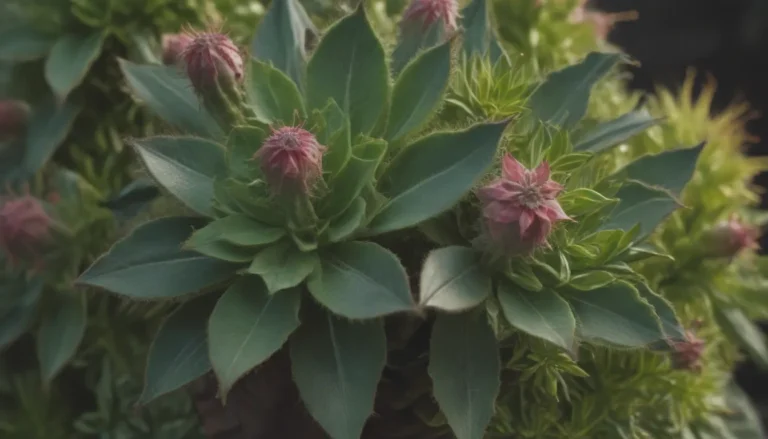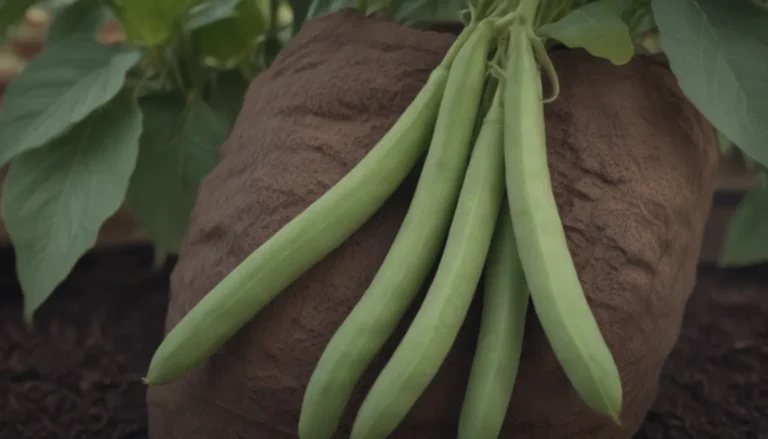The Ultimate Guide to Growing and Caring for Sweet Potato Vine

Are you looking to add a touch of vibrant color and lush foliage to your container garden? Look no further than the sweet potato vine (Ipomoea batatas). This fast-growing annual is a classic “spiller” plant, known for its long tendrils of varied leaf colors that spill over the edges of pots. Whether you’re a seasoned gardener or a newbie looking to add some greenery to your space, you’ll find that sweet potato vine is a versatile and easy-to-care-for plant.
Why Choose Sweet Potato Vine?
Sweet potato vine is a popular choice for container gardening for several reasons. Here are some of the benefits of growing this beautiful plant:
- Fast-growing: Sweet potato vine grows quickly, so you’ll see results in no time.
- Varied leaf colors: With hues ranging from purple to burgundy, sweet potato vine adds a pop of color to any garden.
- Versatile: Whether you have a sunny spot or partial shade, sweet potato vine will thrive in various growing conditions.
- Low maintenance: Once established, sweet potato vine is easy to care for, making it a great choice for busy gardeners.
Growing Conditions
To ensure your sweet potato vine thrives, it’s essential to provide the right growing conditions. Here are some key factors to consider:
- Light: Sweet potato vines love the sun but can also tolerate partial shade. The more sun they get, the more vibrant their leaf color will be.
- Soil: Plant your sweet potato vine in moist, well-drained soil that’s enriched with organic matter. Avoid overwatering to prevent root rot.
- Water: While sweet potato vines are drought-tolerant, they will grow more vigorously with regular watering. Keep the soil consistently moist but not waterlogged.
- Temperature and Humidity: Sweet potato vines prefer temperatures around 75 degrees Fahrenheit and do not tolerate frost. They thrive in humid climates but don’t require high humidity like other tropical plants.
- Fertilizer: For optimal growth, fertilize your sweet potato vine with a well-balanced fertilizer during the growing season.
Types of Sweet Potato Vine
There are several popular varieties of sweet potato vine to choose from, each with its own unique characteristics. Here are some common types of sweet potato vine:
- Ipomoea batatas‘Sweet Caroline’
- Ipomoea batatas‘Blackie’
- Ipomoea batatas‘Ragtime’
- Ipomoea batatas ‘Ace of Spades’
- Ipomoea batatas ‘Goldfinger’
- Ipomoea batatas ‘Midnight Lace’
Caring for Your Sweet Potato Vine
Proper care is essential to ensure your sweet potato vine thrives and remains healthy. Here are some tips for maintaining your plant:
Pruning
Regular pruning is essential to keep your sweet potato vine in shape. Trim back broken or sickly vines and cut rapidly spreading tips to prevent them from extending too far. Prune about 1/4 inch above leaf nodes to encourage new growth.
Propagating
Sweet potato vines are easy to propagate from cuttings or tubers. You can also propagate them in water for a fun and easy gardening project.
- To propagate with cuttings, simply take a cutting from an existing plant and root it in water or soil.
- To propagate with tubers, plant the tubers in the spring and watch them grow into new plants.
- To propagate in water, place a cutting in a jar of water and wait for the roots to develop before planting it in soil.
Potting and Repotting
When potting your sweet potato vine, choose a tall container with ample drainage holes to allow the vines to spill over the edges. Use a good-quality potting soil mixed with compost and water the plant regularly to keep it healthy.
Overwintering
To overwinter your sweet potato vine, you can either keep cuttings in water indoors or dig up the tuberous roots and store them in a cool, dry place. Come spring, you can plant the sprouting tuber for a new growing season.
Common Pests and Diseases
Like all plants, sweet potato vines are susceptible to pests and diseases. Here are some common issues to watch out for:
- Golden tortoise beetle: This insect can munch holes in the leaves of your sweet potato vine, causing damage.
- Aphids: These small insects can suck the sap from the plant, causing stunted growth.
- Sweet potato weevils: These pests can cause yellowing of the vines, affecting the plant’s overall health.
Proper care, including regular watering and fertilizing, can help prevent common pests and diseases.
How to Get Your Sweet Potato Vine to Bloom
While sweet potato vines are known for their foliage rather than their flowers, you can encourage blooms with the right care. Here are some tips for getting your sweet potato vine to bloom:
- Bloom Months: Sweet potato vines rarely flower outside of the tropics, but if they do, you’ll see blooms in the spring or summer.
- Encouraging Blooms: Provide adequate water, sunlight, and nutrition to promote flowering. Use a bloom-enhancing fertilizer and remove spent flowers to encourage more blooms.
Common Problems and Solutions
If you encounter issues with your sweet potato vine, it’s essential to identify the problem and take corrective action. Here are some common problems and their solutions:
- Leaves Turning Yellow or Brown: This may be due to root rot or fungal infection. Ensure proper drainage and avoid overwatering.
- Blackened Leaves: Frost-sensitive sweet potato vines may develop blackened leaves if exposed to cold temperatures. Remove affected plants promptly.
- Leaves Wilting or Curling: Water your sweet potato vine regularly to prevent wilting. Ensure the soil remains consistently moist but not waterlogged.
- Holes in Leaves: Insect pests like beetles can cause holes in the leaves. Use natural remedies like diatomaceous earth or neem oil to deter pests.
By addressing these issues promptly, you can keep your sweet potato vine healthy and thriving year-round.
In conclusion, growing and caring for sweet potato vine is a rewarding experience that adds beauty and color to any garden. By following these tips and guidelines, you can enjoy vibrant foliage and possibly even blooms with your sweet potato vine. Whether you’re a novice gardener or a seasoned pro, sweet potato vine is a versatile and low-maintenance plant that will brighten up your outdoor space. Happy gardening!





